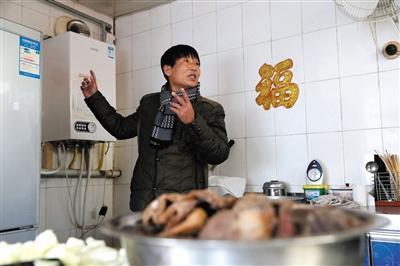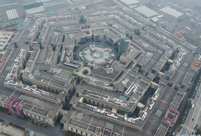

 |
| A man does selfie wearing a mask. (File Photo) |
China has been cutting pollution in an effort to clean up its air for many years. Being the most carbon-intensive fossil fuel, coal is a major force in carbon-dioxide emissions.
The capital city will continue to cut coal consumption by ending the trade of low-grade bituminous coal for civil use within this year. And four districts (Chaoyang, Haidian, Fengtai and Shijishan) will end coal use altogether by the end of 2017, said the Beijing Municipal Commission of Rural Affairs on Tuesday.
This year, 172 villages in the four districts that rely on coal-fired heating will reduce their use of coal and gradually switch to gas. Each household will reduce the use of coal by 3 tons during the winter season. Nearly 200,000 villagers will benefit from the project, which will save some 600,000 tons of coal.
Beyond the first four districts, Beijing is also going to promote a "No Coal" campaign in Tongzhou, the sub-capital center, as well as two heavily polluted areas, Daxing and Fangshan. This information comes from the Ministry of Environmental Protection.

A man living in Xinzhuang village, Daxing district's Caiyu town, said that after the government helped his family change to a gas-fired heating system, he was able to adjust the temperature independently. The temperature of his home is never lower than 10℃. (Photo/The Beijing News)
By 2017, Beijing plans to cut annual coal consumption by 13 million metric tons from the 2012 level in a bid to slash the concentration of pollutants.
Last year, 1,500 people in six villages of Caiyu town finished construction of a pipeline. And this year another 1,200 people will benefit from it.
As far as the cost of using gas rather than coal, the man said that he has to spend about 2,000 yuan on three to four tons of coal for heating, which is more expensive than the current cost of gas, and that doesn’t even take into account the government subsidy to promote gas heating.
 PLA holds joint air-ground military drill
PLA holds joint air-ground military drill Charming female soldiers on Xisha Islands
Charming female soldiers on Xisha Islands Beautiful skiers wear shorts in snow
Beautiful skiers wear shorts in snow Getting close to the crew on China's aircraft carrier
Getting close to the crew on China's aircraft carrier Chinese stewardess celebrate test flight at Nansha Islands
Chinese stewardess celebrate test flight at Nansha Islands World's first 'underwater skyscraper'
World's first 'underwater skyscraper'  Pentagonal Mart becomes the largest vacant building in Shanghai
Pentagonal Mart becomes the largest vacant building in Shanghai "Rent me as your girlfriend!"
"Rent me as your girlfriend!" A beauty's dancing youth
A beauty's dancing youth Top 20 hottest women in the world in 2014
Top 20 hottest women in the world in 2014 Top 10 hardest languages to learn
Top 10 hardest languages to learn 10 Chinese female stars with most beautiful faces
10 Chinese female stars with most beautiful faces China’s Top 10 Unique Bridges, Highways and Roads
China’s Top 10 Unique Bridges, Highways and Roads Xi arrival shows commitment to Mideast
Xi arrival shows commitment to Mideast Chinese firm aims to build ‘world’s largest cloning factory’
Chinese firm aims to build ‘world’s largest cloning factory’ Qinghai Lake aircraft ban reveals risky trend in wildlife photography
Qinghai Lake aircraft ban reveals risky trend in wildlife photography Foreigners flock to China for cancer, chronic disease treatments
Foreigners flock to China for cancer, chronic disease treatmentsDay|Week